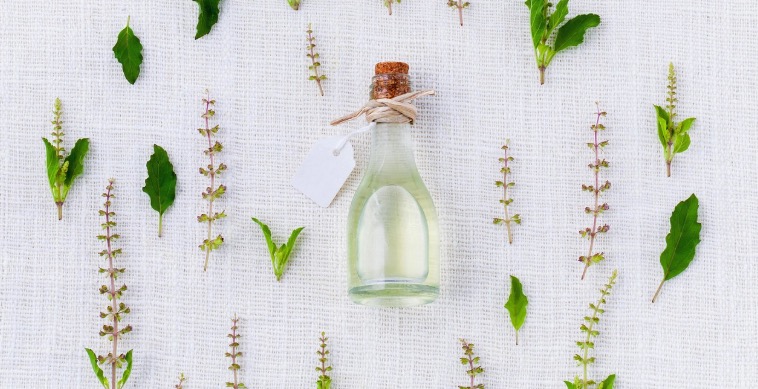You’ve had a long day. The kettle’s on, the lights are low and a familiar, calming scent drifts from the living room. Within moments your shoulders drop and sleep feels possible. That gentle effect is what essential oils do for many people: quick, sensory nudges that change mood and atmosphere. This guide explains exactly what essential oils are, how they’re made, why they work, and—crucially—how to use them safely at home.

What are essential oils?
- Definition: Essential oils are concentrated, volatile aromatic compounds extracted from plants. They capture the plant’s scent and some of its chemical properties in an oily form.
- Concentration: A tiny volume of essential oil often represents large quantities of plant material. For example, several hundred kilograms of rose petals can be needed to produce one kilogram of rose oil.
- Not the same as carrier oils: Essential oils are highly concentrated and usually mixed into carrier oils (like jojoba or sweet almond) before skin use.
How essential oils are produced
Essential oils are obtained by different extraction methods. The method influences scent, chemical profile and suitability for certain uses.
- Steam distillation: The most common. Steam pulls volatile compounds from plant material; vapour is condensed and oil separated. Widely used for lavender, eucalyptus and rosemary.
- Cold pressing (expression): Used mainly for citrus peels (lemon, orange, bergamot). Mechanical pressure releases oils without heat.
- CO₂ extraction: Uses supercritical carbon dioxide to extract compounds at low temperatures. Yields a broader spectrum of aromatic constituents and is often used for delicate flowers or complex resins.
- Solvent extraction/enfleurage: Solvents extract fragrant molecules from very delicate flowers (jasmine, tuberose) producing absolutes rather than true essential oils. Enfleurage is largely historical but still referenced.
- Resin tapping: Some aromatics come from tree resins (frankincense, myrrh) gathered and then distilled or solvent-processed.
What’s in an essential oil? The chemistry, simply
Essential oils are complex mixtures of molecules. Understanding the main chemical classes helps explain effects and safety.
- Monoterpenes and sesquiterpenes: Often responsible for bright, fresh or woody notes (e.g., limonene in citrus, pinene in pine). Can be uplifting or stimulating.
- Alcohols: Linalool (lavender) and geraniol are typically soothing and antimicrobial.
- Esters: Often calming and gentle on skin; associated with floral, sweet aromas.
- Phenols and ketones: Powerful biologically. Phenols (e.g., eugenol in clove) can be antimicrobial but also irritating. Ketones (e.g., thujone) may be toxic in high doses.
- Chemotype matters: The same plant species can produce oils with different dominant compounds (a chemotype). For instance, thyme can be thymol or linalool chemotype—very different in effect and safety.
How essential oils affect body and mind
Two main routes produce effects: smell and skin absorption.
- Olfaction and the brain: Volatile molecules bind to receptors in the nose. Signals travel to the olfactory bulb and limbic system—regions tied to emotion and memory—so scents can alter mood, alertness and perceived stress quickly.
- Topical absorption: When diluted and applied to skin, some constituents penetrate and enter the bloodstream or act locally (e.g., anti‑inflammatory or analgesic effects).
- Inhalation via diffuser: Offers room scenting and mild inhalational exposure. Effects are usually gentle and transient.
- Note on systemic actions: Some compounds have measurable antimicrobial or pharmacological activity in lab studies, but therapeutic claims for many uses still need stronger clinical evidence.
Common essential oils and typical uses
- Lavender (Lavandula angustifolia): calming, sleep-promoting, gentle for many users.
- Peppermint (Mentha × piperita): invigorating, eases tension headaches when diluted and applied to temples.
- Eucalyptus (Eucalyptus globulus): clears airways; good for congestion in steam inhalations.
- Tea tree (Melaleuca alternifolia): antimicrobial properties; used in topical skin care (diluted).
- Citrus oils (lemon, sweet orange): uplifting and fresh; avoid undiluted sun exposure with bergamot and some citrus.
- Frankincense and chamomile: often used for relaxation and mild anxiety reduction.
Safety: how to use essential oils responsibly
Essential oils are powerful. Safe practice prevents skin reactions, toxicity and unwanted interactions.
- Dilution is essential: Typical topical dilutions are 1–3% for adults (that’s 1–3 drops of essential oil per 5 ml/1 teaspoon of carrier oil). Lower concentrations for facial skin, children and older adults.
- Patch test: Apply a small diluted amount to a patch of skin and wait 24 hours to check for irritation.
- Avoid ingestion unless guided: Internal use should only occur under direction from trained, qualified practitioners. Many oils are toxic if swallowed.
- Phototoxicity: Some oils—especially bergamot, lemon and other citrus—can cause skin burns or pigmentation when exposed to sunlight. Avoid sun after application.
- Pregnancy and breastfeeding: Some oils are contraindicated in pregnancy (e.g., rosemary, sage, some chemotypes of thyme). Seek professional advice before use.
- Children and babies: Use far more dilute blends and avoid certain oils altogether (e.g., peppermint is generally avoided in infants). Age-appropriate guidance is important.
- Pets: Animals metabolise compounds differently. Some essential oils (tea tree, eucalyptus, citrus, peppermint) can be toxic to cats and dogs. Keep diffusers and applied oils away from pets and consult a vet.
- Interactions with medications: Oils can affect enzymes and alter drug metabolism. If you take prescription medication, ask a healthcare professional before regular essential oil use.
Choosing quality essential oils
Labels vary. Knowing what to look for helps avoid poor‑quality or adulterated products.
- Botanical name: The Latin name (e.g., Lavandula angustifolia) tells you the exact plant species.
- Chemotype: If applicable, look for chemotype (ct. linalool) to understand chemical profile.
- Extraction method: Steam distilled, cold pressed, CO₂—this affects constituents and price.
- Country of origin and batch number: Good producers include origin and batch info for traceability.
- GC‑MS reports: Reputable suppliers can provide gas chromatography–mass spectrometry reports showing chemical composition.
- Avoid vague claims: ‘Therapeutic grade’ is not a regulated term. Trust transparent suppliers with testing information.
Practical recipes and simple applications for sleep and everyday use
- Bedtime diffuser blend (room size 20–30 m²): 3 drops lavender + 2 drops bergamot + 1 drop frankincense in a diffuser. Run 15–30 minutes before bedtime.
- Roll‑on for winding down (10 ml roller bottle): 8 ml carrier (jojoba) + 10 drops lavender + 4 drops bergamot. Apply to wrists or chest. Patch test first.
- Tension headache rub (10 ml carrier): 9.5 ml carrier + 2 drops peppermint + 1 drop lavender. Massage gently to temples and back of neck—avoid eyes.
- Steam inhalation for congestion: Add 1–2 drops eucalyptus to a bowl of hot water, lean over with towel and inhale carefully for short periods. Not for young children.
Contraindications and red flags
- Severe allergic reaction: Discontinue use and seek medical help if breathing difficulty, swelling, or severe rash occurs.
- High‑risk individuals: People with epilepsy, high blood pressure, serious liver conditions, or on certain drugs should consult healthcare providers before using specific oils.
- Overuse: Continuous diffusing all night can cause headaches or sensitisation. Use intermittently.
Practical storage and handling
- Dark glass bottles: Store oils in amber or cobalt bottles to protect from light.
- Cool, dark place: Heat and sunlight degrade aromatic compounds.
- Keep out of reach of children and pets: Even small amounts can be harmful if swallowed.
Quick checklist for buying and using essential oils
- Check botanical name and extraction method.
- Look for batch number and supplier transparency.
- Ask for GC‑MS if using for therapeutic reasons.
- Begin with low dilutions and patch test.
- Avoid ingestion unless expert-guided.
- Keep oils away from children and pets.
Final thoughts
Essential oils are concentrated plant extracts that can add real sensory value to daily life—from helping to create a calming bedtime ritual to easing temporary congestion. They combine chemistry, tradition and personal preference. Use them with respect: dilute, test, and choose quality products.
At Dozywave, we continually explore gentle, nature-inspired ways to improve sleep. Our range of sleep aids pairs carefully selected scents with safe, thoughtful formulations to help you sleep like a baby.

